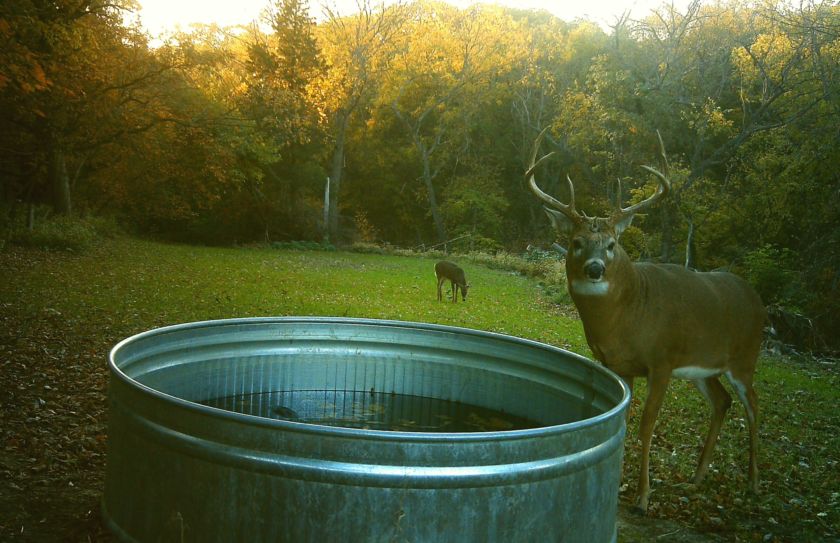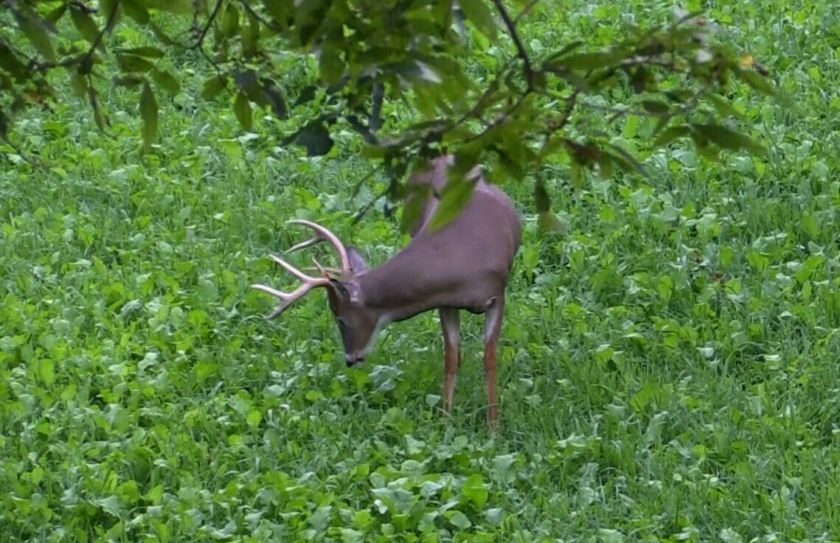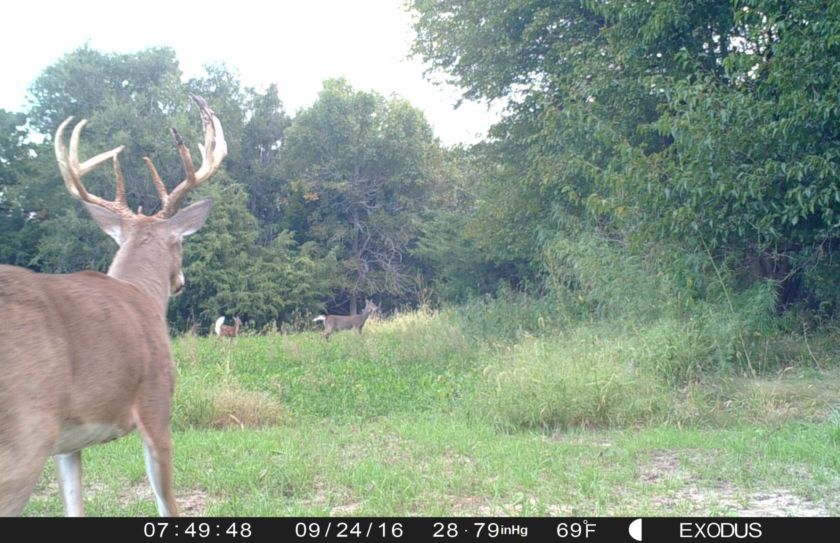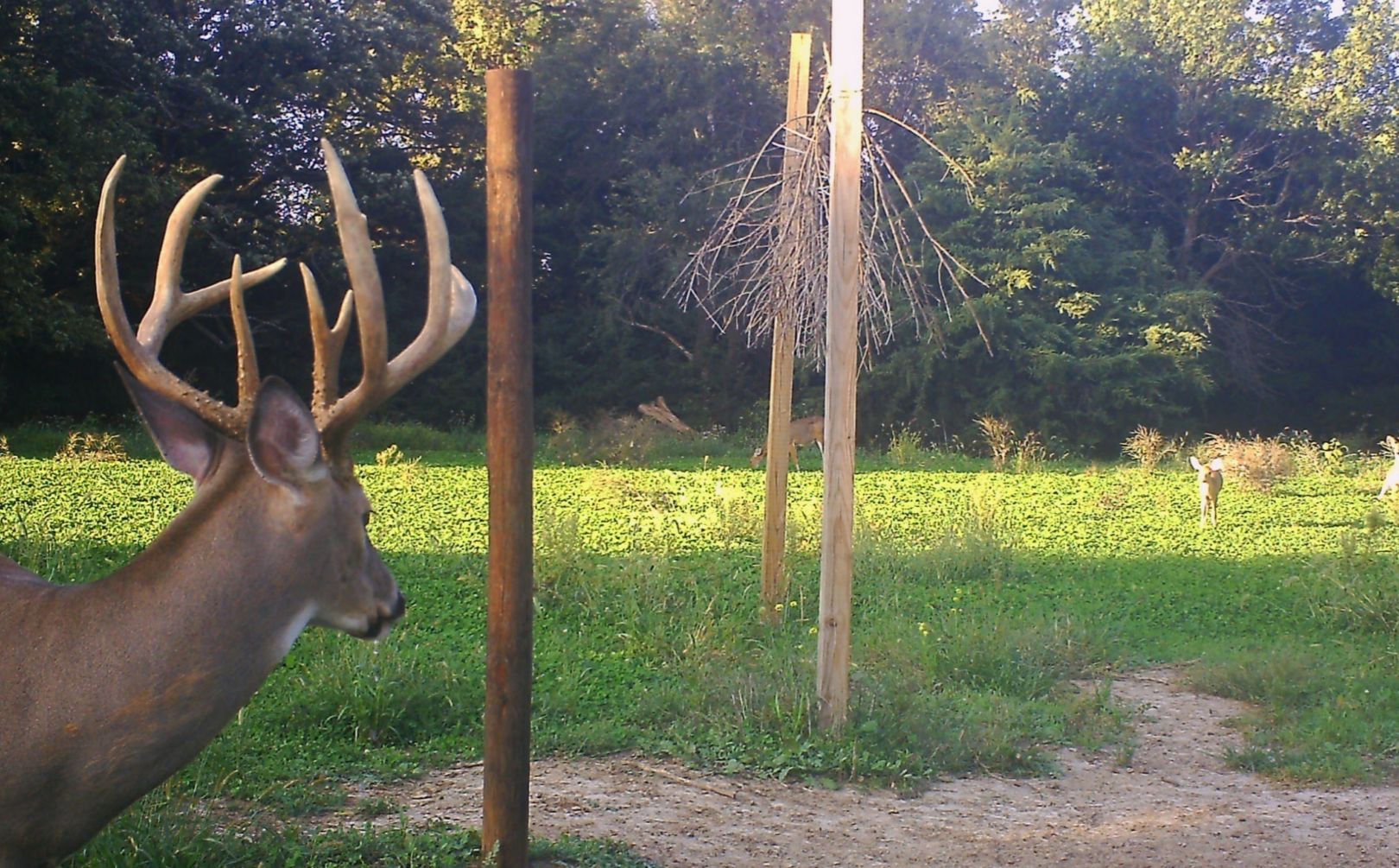
What are your own kill plot strategies?
2006 was the pinnacle of my "farming" activities. With 30 food plots in three states totaling over 18 acres, you can imagine how critical I felt it was to offer a great balance of both food and cover when it came to designing a whitetail paradise. Would it come as a surprise to you that out of all of those plots, only a handful could be considered kill plots? Would it also surprise you that only two out of my top 25 bucks that were between 3 and 7 years old have been killed on a food plot?
Beautiful fields of green dot large portions of the landscape as hunters attempt to attract and provide nutrition to deer on the lands where they hunt. The terms "kill plot" or "harvest plot" gets thrown around often, and the typical goal of these plots is to offer an attractive food source in which to shoot a deer. Is a food plot focused hunting strategy ideal for your parcel? What I have experienced is that as the level of attraction increases, so does the level of risk. When you provide a high quality food source to draw deer in, it is critical that you don't then send them scampering away as you attempt to hunt them. When that situation occurs, your food source is doing more harm than good. If you are experiencing the attract/repel phenomena while attempting to hunt those on your pretty fields of green, follow along while I discuss some of the conditions that you must establish to find "Kill Plot Success". After reading about the 8 conditions, I can't wait to share a 2013 success story that my 11 year old son Jake experienced while practicing effective kill plot strategies for whitetails! Here are my top 8 strategies for creating effective kill plots for deer:
1. Deerless Access
It's often very risky to attempt to access a kill plot during the early morning hours. Getting into your stand without alerting deer is a critical kill plot strategy, so that may mean avoiding a kill plot for a morning hunt unless you are certain the local deer herd is somewhere else. For afternoon hunts, avoiding bedding areas is vital to your evening success. Ideally, you'll create bedding areas and large food sources that help define the locations where the deer are spending their time during the hours you access your kill plot. A deerless access starts by defining where deer are and where they are not.
2. Quiet Approach
A quiet approach will allow you to move through your hunting lands closer to deer without spooking them. Noisy gear, ATVs, and abrasive clothing materials can all serve to clear the area of deer, whether they smell you or see you. By removing weeds with chemicals, as well as any woody debris, by hand, you should be able to walk to your stand very quietly. If you can be heard by your hunting buddy from 50' away while accessing a stand location, you probably need some new gear.
*The Peak Rut sit described in the above video, was created by using advanced Food Plot Hunting tactics.
3. Downwind Blocked
Once you access your stand without alerting any deer, pay strict attention to where your scent is blowing. If possible, make sure that your downwind is blocked in some manner, to minimize the likelihood of deer traveling on your downwind side. Mature hardwoods, open pastures, and waterways can all be natural features used to capture any downwind scent in a safe location away from deer. Roads, houses, and fencing are also some great manmade barriers that may help take your scent out of the equation. If you feel that you have to be completely scent free to sit in a particular stand location, then take a more conservative approach by picking a location that safely disperses your scent for you. The process of scent control starts with an effective access and stand location strategy, that is complimented with a backup plan of scent elimination soaps, sprays, powders, rubber containers and high-tech clothing.
4. Established Deer Movement
Make sure that your kill plot is positioned to take advantage of either natural or manmade deer movement patterns. Your kill plot should be a part of the continued movement pattern, and not the end of the movement. A line of deer movement from a bedding area, to a brushy travel corridor, through a native grass field and finally into a large food source, is just one example of an established line of deer movement that features an effective kill plot location.
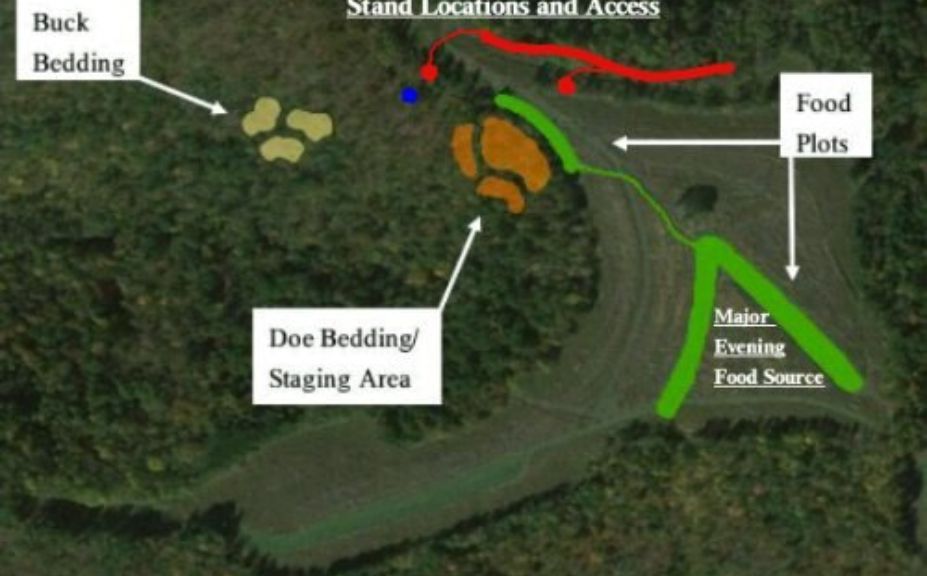
*By defining deer movements first, you can then define your movements as a hunter. A typical defined line of daily deer patterns in many areas can include buck bedding to waterhole to doe bedding to major food sources. The higher the level of precision within the movement, the more potentially accurate and successful your hunting approach. Definition in hunting access also results in predictable wind patterns to hunt that will carry your scent away from deer movements, and not into them.
5. A Quick View
Maybe a better term for a kill plot would be a travel plot so that more focus can be placed on the highly effective concept of creating an opportunity for a brief glimpse at a defined deer movement. Observing a few quick bites before a deer travels off to another location, is a great strategy. Also, more deer often move more deer, so a kill plot of smaller proportions will help to keep the train of deer movement passing by. A narrow plot that encourages travel from one end to the other, is a great way to facilitate deer movement as well.
6. Deerless Departure
Getting out of your stand is just as important as getting in ! The total package of avoiding deer for your entire sit will help to preserve the stand location for future quality sits. Quiet equipment and quiet access routes, along with food plots designed to move deer to and past your stand location, should combine to help you exit the stand without spooking deer. It may also be more effective to leave a kill plot 15 minutes early when the coast is clear, rather than wait until the last minute of daylight, and potentially spook a deer that you didn't realize was extremely close to you.
7. No Scent Left Behind
How many deer are spooked 3 hours after your sit? How about 5 hours after your sit? It's difficult to know for sure, but limiting your exposure to tall grasses and overhanging branches upon your exit, is a great way to minimize the likelihood of spooking deer after you've left your stand. Also, brushing off the bottom of your stand towards the side of the expected deer movements, will help to bump the deer away from catching a nose-full of hunter scent left at the base of your tree or blind location. I currently have close to 30 stand locations in the woods, and almost all of them feature a hunter access trail that dead ends at the base of the tree. In Michigan's Upper Peninsula, I had a great access tunnel that not only traveled through a cattle chute of heavy young conifers, after crawling over and then under two large logs, but ended with having to walk across, and over, and across a pile of logs to begin the climb into the tree. Another great technique a couple of lower-Michigan clients showed me, was to actually walk on 8-10" thick slabs of hardwood log cuttings that allowed not only extremely quiet steps of access, but the ability to do so while being completely scent free.
*Effective scent control begins with your stand positioning and access. For a more detailed look at the priorities of scent control, take a look at Advanced Scent Control Tips.
8. Maintaining the Integrity of the Established Deer Movement
More important than the quality of the forage within the plot, and more important than even shooting a deer on your kill plot, is that the pattern of deer movement is not disturbed through hunter impact until you take a shot. Season-long, unpressured deer movements are a rare occurrence within many hunting lands. As long as the integrity of deer movement patterns are maintained throughout the entire hunting season, your kill plot will improve over time and work for you, instead of against you. Are you attracting deer that you are able to observe over and over again without spooking, or are you attracting deer with a high likelihood of spooking, while accessing or using the stand location? If your answer is the latter, then, in my experience, you need shrinking, adjusting or even completely removing the food plot location.
Conclusion
I am a strong advocate of using food sources to attract, hold, define and strengthen deer movement patterns; however it is critical to consider the risk factors. As I prepared for the opener of Wisconsin's 2013 archery season, I couldn't wait to be sitting over a small kill plot with my 11 year old son, Jake. If I couldn't have gotten the above 8 conditions to take place at the same time, we would have hunted somewhere else. As Jake and I settled into the "Fencerow Stand", I was so proud of his dedication to practicing all summer, and I couldn't wait for the evening to unfold. As several does and fawns approached and passed, Jake looked up with pleading eyes for the ok to shoot. But the does were just outside of my self-imposed limit for Jake of 25 yards, and you could see the disappointment in Jake's eyes. However, because we had followed the 8 rules of a kill plot, we enjoyed allowing the deer to pass, without them discovering us in the nearby fencerow. But then our luck changed! A mature doe began to feed back along the line it traveled and seemed content to pass by again, only this time within 15 yards! It was time for Jake to release an arrow, and within 10 minutes we were standing over his very first bow kill!
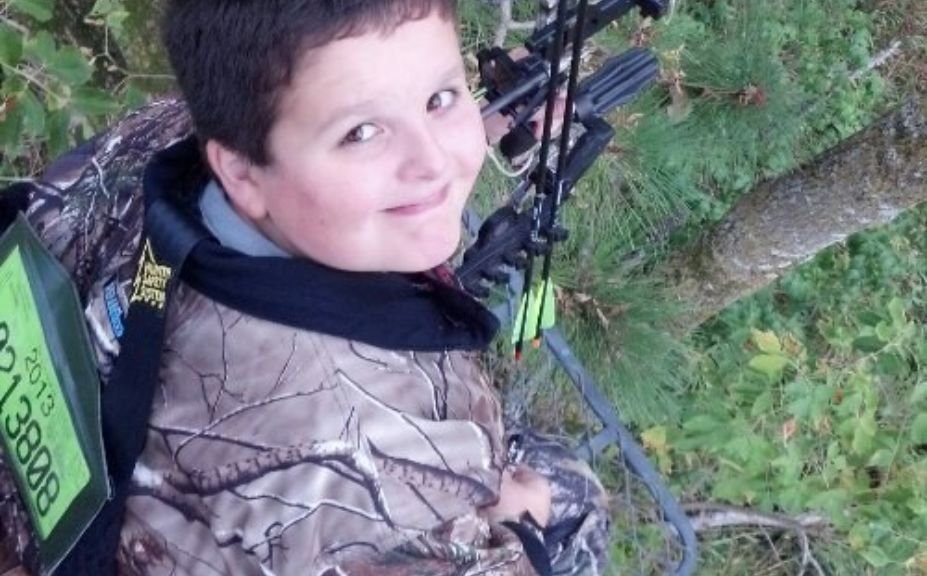
A properly established kill plot can yield results for even the most inexperienced of hunters, and the smile on Jake's face was well worth the effort! I encourage you to attempt to create the 8 conditions of a successful kill plot. If you can't do so, then you should seriously consider another place to sit, so that you can focus on attracting as many deer as possible without spooking them.
*This was chapter 17 of my food plot book. If you like this chapter, I am sure you will like the entire book, Food Plot Success by Design, which can be purchased by clicking on the title-Thanks!
